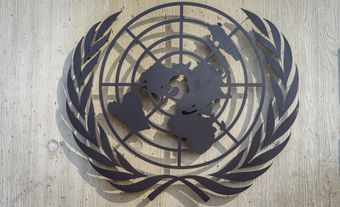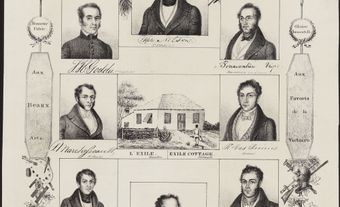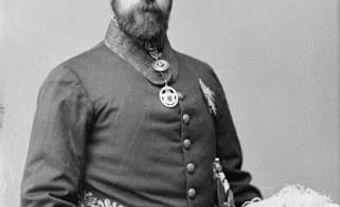This article was originally published in Maclean's Magazine on March 3, 1997
Martin's Election-year Budget
At Mama Teresa's, intrigue is always the special of the day. The signed photographs of past and present Liberal stars on the walls of the homey downtown Ottawa restaurant serve as constant reminders of the political coups and campaigns hatched inside the smoky interior. No one, as a result, batted an eye when a noisy collection of government MPs gathered there for cocktails, pasta and a healthy dollop of political gossip a few days before Finance Minister Paul MARTIN tabled his budget last week. Yet even the politicians perked up when a handful of unexpected guests strode into the room and sat down in a corner. If the Liberals are to return to power, it will be through a campaign mapped out by the husband-wife team of David and Penny Collenette, campaign guru John Rae and the party's national election co-chairs David Smith and Céline Herveux-Payette. Their mere presence together in public made one thing perfectly clear - it may have been budget week in Ottawa, but election fever was on everyone's minds.
The budget itself may not have been the traditional freewheeling pre-election fare. But by backing off on expensive spending programs and by disposing of his bad news a week earlier, when he announced a 73-per-cent hike in Canada Pension Plan contributions by 2003, Martin set his party on course to run the next campaign on its conservative, deficit-cutting record. At the same time, the government's modest spending programs were clearly aimed at the party's traditional supporters - women, minorities and the vote-rich middle class - whose support, according to Liberal polling, has become dangerously soft. And Martin promised that Canadians will finally begin to get some payoff for four years of painful denial. "We can see the worst is behind us," he told the House of Commons. "The era of cuts is ending."
For now, though, Martin is clearly gambling that the Liberals can pull off a precarious balancing act - walking a tightrope between restraint and generosity. But will he succeed? The initial response was predictable but muted: the business community lauded Martin's progress on the deficit; the Reform party said he should have cut taxes; social activists and labor leaders maintained he should have spent more to create jobs and shore up social programs.
By and large, though, the post-budget sniping seemed downright tame compared to the internal government battle between the spenders and the slashers that preceded last week's package. Afterwards, the scramble was on to take credit for the few goodies parcelled out. Party unity was dented by published reports of claims by Health Minister David Dingwall that he and a cadre of like-minded caucus members had convinced Martin and Prime Minister Jean Chrétien to loosen the purse strings for health care and education. "The gall of the man," thundered one of Martin's closest advisers. By week's end, a campaign was under way to paint Martin and Chrétien - and not such activist Liberals as Dingwall, Environment Minister Sergio Marchi, Solicitor General Herb Gray and former defence minister David Collenette - as the architects of the $800-million fund to promote research in universities and hospitals, the $600-million program to fight child poverty, the $275 million in financial support for university students and their parents.
Despite the clamor to spend more, Martin could only be nudged off his single-minded goal to meet, or exceed, his deficit-reduction targets. In pre-budget meetings last December and January, he argued with Chrétien that no matter how weary Canadians were of cost-cutting, they would not forgive the Liberal party if it strayed off the promised track of a balanced budget by the end of the century. "People are deficit-weary," Martin told Chrétien, according to a senior Finance official. "But God help the government that brings this issue back to the table." The recently buoyant economy had allowed Ottawa to whittle a further $5.3 billion off Martin's 1996-1997 deficit target of $24.3 billion. But even with the unemployment rate stuck at what the budget calls "unacceptably high" levels of 9.7 per cent and facing demands for job-creation measures, Martin refused to revise his deficit targets. They remain at $17 billion for 1997-1998 and $9 billion for 1998-1999. "If Paul ever missed a deficit target, he'd have to resign," said a senior Martin aide. "He has staked his credibility on those targets."
Instead, Chrétien and Martin plotted a fine line between fiscal prudence and new spending that totalled almost $1 billion in social initiatives and modest job-creation schemes. In the end, Martin's giveaway list was short but strategically aimed at the restive middle class and the working poor:
Child Poverty
Senior Liberals now admit they blundered badly with a 1993 Red Book pledge to spend $720 million on a national day care scheme. Even with the built-in escape hatch - the program would need the agreement of all the provinces, which Ottawa has failed to secure - the issue still looms as a broken promise. In part to deflect attention from that, Martin last week announced a $600-million national child benefit system that on July 1, 1998, will direct money to 2.5 million poor children in 1.2 million families. Added to the $250 million promised in the last budget, Ottawa will now contribute $6 billion a year to alleviate child poverty. Among the measures of the new plan, benefits for a low-income family with two children will increase to $254 a month from $212.
Health
The Liberals may be squabbling over who deserves the credit, but critics say the infusion of $300 million into health-related programs over the next three years is not a lot to crow about. The National Forum on Health, set up by Chrétien in 1994, recommended in early February that Ottawa expand medicare to cover home care and prescription drugs, now paid for through private insurance and some provincial programs. Too expensive, said Martin. But even the tiniest steps are better election fodder than nothing. Instead, Ottawa has created a $150-million Health Transition Fund to set up projects in the next three years to "experiment" with home care and drug programs. A further $50 million was set aside for a national health information system. It could have been worse. Martin was prepared to cut deeper into two community action programs that fund local services, including family-resource centres and prenatal nutrition programs. But Chrétien listened to the pleas of backbenchers and instead ordered an additional $100 million beyond current funding for the two programs.
Education
With $275 million earmarked for students and their parents, Martin aimed squarely at middle-class voters struggling with increasing postsecondary education tuition fees. Among the more popular budget measures ("We're getting tons of mail on this one," said a Martin aide late last week) is a plan to allow parents to double their maximum registered education savings plan annual contribution to $4,000. The changes would also allow unused RESP money to be rolled into registered retirement savings plans. Repayment of student loans, due in the past within 18 months, has been stretched to three years, with Ottawa picking up the interest tab at a cost of $20 million a year. Students also get a break with living costs: the budget increases the education tax credit from $100 a month to $150 in 1997 and $200 in 1998.
Infrastructure
The budget created an $800-million Canada Foundation for Innovation to improve research facilities at universities, colleges and hospitals that have been hard hit by budget cutbacks. Martin and Chrétien worked on this budget centrepiece under such secrecy that not even cabinet was told of the details. In fact, Industry Minister John Manley, a long-time promoter of enriched funds for high-tech research, knew nothing of a bookkeeping ploy to pay for the program out of 1996 revenues rather than stretch the payments over the life of the five-year project. "The only way to make this work as a long-term economic program," said a Martin aide, "was to take the money out and put it into an arms-length agency," protecting it from any future fiscal pressures. That manoeuvre also safeguards the project as a paid-for election plum.
With the Liberals at 47 per cent in popular opinion polls, compared with 14 per cent for the second-place Conservatives, such precautions may seem unnecessary. But there are troubling questions on the horizon. After less than four years in power, the party's internal polling indicates, the Liberals have managed to attract affluent, fiscally conservative voters who support the government's anti-deficit tack. Now, with the deficit nearly licked, strategists are asking how the party can continue to hold them. Meanwhile, the polls also suggest that traditional Liberal supporters are starting to tire of the deficit-fighting message. "The party needs to show its compassion," stresses Liberal pollster Michael Marzolini, president of Toronto-based POLARA. The question is whether the parsimonious handouts in last week's budget are enough to prove the Liberals care.
Maclean's March 3 , 1997

 Share on Facebook
Share on Facebook Share on X
Share on X Share by Email
Share by Email Share on Google Classroom
Share on Google Classroom


